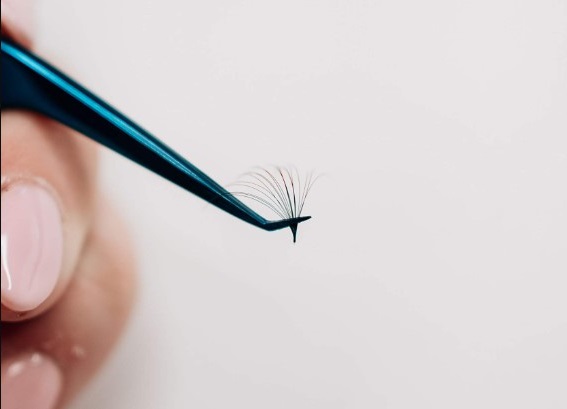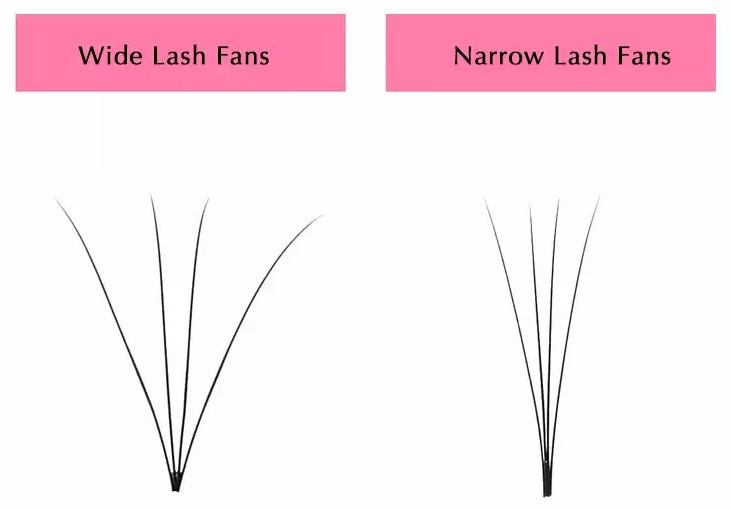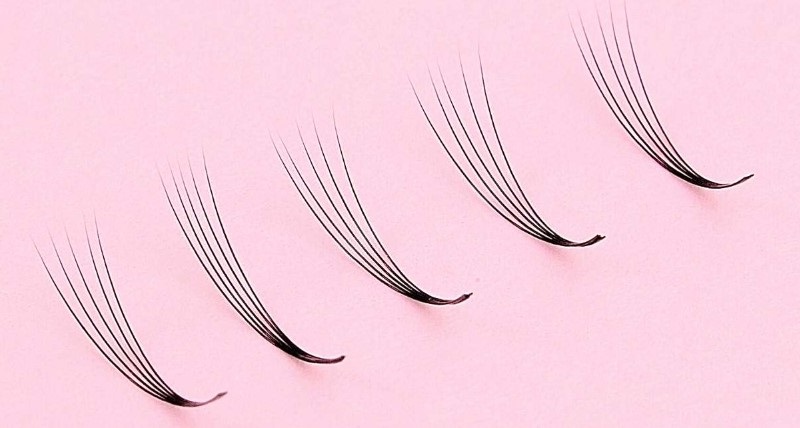Volume lash fans, also known as Russian volume or 2D-6D lashes, are an advanced form of eyelash extensions and have become increasingly popular over the last few years. Volume lash fans provide a fuller, thicker look than classic eyelash extensions and require special skills and techniques to create perfect volume fans. We will explain below what makes a perfect volume fan, the different methods for creating them, how to practice making them, and the differences between pre-made vs. handmade volume fans.
What is a volume lash fan?
A volume lash fan is made up of multiple lightweight synthetic lashes that are attached together at their base using glue or adhesive. This creates a fan-like shape with multiple strands of lashes that can be applied to one natural lash at once for an enhanced look. Volume lash fans come in different sizes depending on the desired effect; from narrow single-lash volumes to wide multi-lash volumes for mega effects. The size of each individual strand is much thinner than classic eyelash extensions so they appear more natural and don’t weigh down your own lashes as much.

What makes a perfect volume fan?
Creating perfect volume fans requires precision and skill from your Lash Artist to achieve flawless results every time. Several factors go into making the perfect volume fan, including the width/length ratio, thickness of the base material used (e.g., tweezers), quality/type of glue used (e.g., clear glue or black glue), number of strands per fan (2D – 6D), evenness/uniformity throughout all fans created during the application process, etc. A good Lash Artist should be able to create consistently looking fans with each application so that clients get beautiful results every time they visit their salon! Remember to use the most appropriate length for the Russian volume to create the perfect fan.
Wide Fan vs Narrow Fan
The width/length ratio determines how many individual strands make up each volumized cluster. Generally speaking, narrower clusters will have fewer strands while wider clusters may have more strands per cluster depending on the desired effect being achieved by the client and Lash Artist alike! Generally speaking, shorter length clusters tend to give off more natural looks, while longer length clusters can provide dramatic fullness and thickness when applied correctly – it all depends on preference and what type of result you’re trying to achieve when creating these types of clustered sets!

Thin Base vs Flat Base
The thickness of the base material used plays an important role in creating flawless-looking volumized sets. Typically, thin bases such as tweezers work best since they allow for easier maneuverability during the application process without having any excess weight pulling down natural lashes, which could cause damage over time if not careful enough when applying! On the other hand, flat bases may work better if you’re looking for more fullness since these types of bases tend to hold onto more product, which leads to larger volumized sets being created. But, this does come with increased risk due to the added weight associated with larger-sized sets!
What Are The Different Volume Methods?
There are several different methods available for creating volumized sets, including the off tape technique (OTT), lean & pick technique (L&P), and pinching technique (PT). Each method has its own advantages and disadvantages, but overall, it comes down to personal preference when choosing which method works best depending on the type of clientele you’re working with, as well as the overall desired outcome being sought after!
Off Tape Technique
This method involves placing multiple synthetic lashes onto strips before applying them onto clients’ natural eyelashes – this allows the artist to quickly attach multiple synthetic hairpieces at once, saving time while still achieving desirable end results! It’s important to note, though, that OTT does require some practice beforehand; otherwise, mistakes could easily happen, leading to potential damage done towards both the client’s own eye area as well as unintentional removal due to overly aggressive movements during the application phase!
Lean And Pick Technique
This method involves using tweezers instead of strips, allowing the artist greater control over positioning each individual strand within the set – by leaning and picking hairs rather than taping them first, it gives the artist freedom to move around pieces quickly without worrying about repositioning the entire strip itself, thus reducing overall processing times significantly! However, L&P requires great attention to detail; otherwise, mistakes could easily occur, leading to potentially damaging outcomes for both the client’s eye area as well as unintentional removal due to overly aggressive movements during the placement phase!
Pinching Technique
This method involves using tweezers to pinch multiple strands of synthetic hair together before applying them onto the client’s natural lashes – this allows the artist to quickly attach multiple pieces at once without having to worry about repositioning the entire strip itself, thus reducing overall processing times significantly! It’s important to note, though, that PT does require some practice beforehand; otherwise, mistakes could easily happen, leading to potential damage done towards both the client’s own eye area as well as unintentional removal due to overly aggressive movements during the application phase!
How to Practice ?
When learning how to make volume fans, it’s important to practice and perfect your technique in order to achieve the best results. There are many eyelash extensions classes where you can learn to create perfect volume fans. There are two popular methods for practicing, the sponge method and the mannequin head method:
- The sponge method involves placing individual strands of lashes on a damp sponge and practicing creating volume fans with them.
- The mannequin head method is a more realistic way to practice since you can place individual strands of lashes on a dummy head, which mimics the look of real eyes better than a sponge does. Both methods can be used for practicing creating perfect volume fans before attempting it on real clients.
What Are Premade Volume Fans?
Premade volume fans are ready-made lash clusters that come pre-assembled from manufacturers. They come in various sizes, styles, and thicknesses so they can be customized depending on what type of look you’re trying to achieve. Premade volume fans are convenient because they save time during application since they don’t need to be assembled by hand; however, they may not always provide the same level of precision as handmade fans due to their pre-assembled nature.

Premade vs Handmade Volume Fans
When deciding between premade vs handmade volume fans, it really comes down to personal preference and the desired outcome being sought after! Handmade volumized sets offer greater control over positioning each individual strand within the set, allowing the artist the freedom to move around pieces quickly without worrying about repositioning the entire strip itself, thus reducing overall processing times significantly! On the other hand, premade sets may work better if you’re looking for quicker results, since these types of clusters come pre-assembled and ready to apply, saving precious time when working with clients! Ultimately, the choice is yours depending on what type of result you’re trying to achieve when creating these types of clustered sets!
These topics will also be of interest to you:

